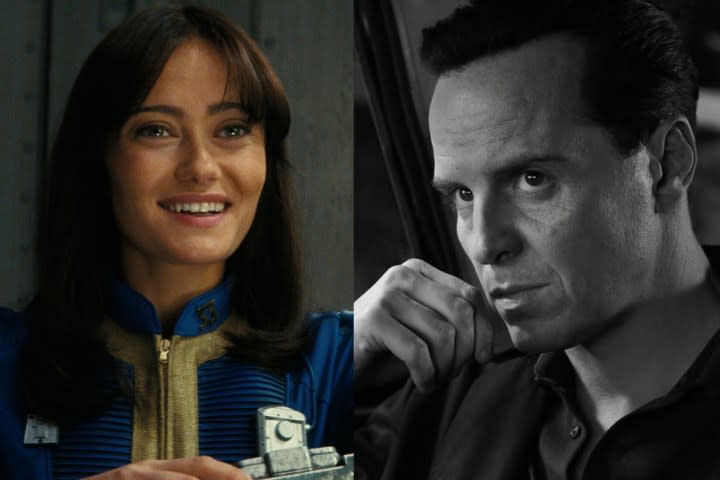It’s time to leave Netflix’s binge-release model behind for good

- Oops!Something went wrong.Please try again later.
When Netflix started producing and releasing its own shows in the early 2010s, the streaming service’s binge-driven, all-at-once release model felt like a breath of fresh air. It was an approach to TV distribution that completely flew in the face of the medium’s established methods — one that prioritized viewers’ interest and schedules over everything else. A lot has changed in the decade since Netflix first burst onto the scene as a distributor of new originals, though.
Nowadays, Netflix’s insistence on dropping complete TV seasons all at once feels less like a revolutionary switch-up and more like a crutch that the platform continues to lean on. Even worse, it’s a release model that seems to be actively harming many of not only Netflix’s best shows, but also certain standout titles produced by other streaming services.
The 3 Body Problem problem
You need look no further than recent TV hits like The Bear, Ripley, 3 Body Problem, and Fallout for proof of that.

Both on paper and in their execution, Ripley and 3 Body Problem are two very different shows. The former is a stylish, taut 1960s noir, and the latter is an uneven, but often stunningly ambitious sci-fi drama. Netflix released 3 Body Problem at the end of March, while Ripley debuted on the platform just a few weeks later. Aside from their shared distributor, the shows are two similarly big swings for their respective creative teams, and both would have benefitted from weekly release schedules. Co-created by Game of Thrones creators David Benioff and D.B. Weiss, 3 Body Problem season 1 never reaches the heights of its makers’ iconic HBO hit. That said, it does contain a few jaw-dropping twists and set pieces that could have easily proven to be massive conversation starters — had viewers been pushed to watch the series’ first eight episodes at the same time and pace.
Ripley, meanwhile, ranks high as one of 2024’s best shows, and that’s reflected in the early reviews it received. Despite how much acclaim it has garnered, though, it seems like the series has flown relatively under the radar. That may have to due with the fact that it was dropped so nonchalantly by Netflix that casual viewers still haven’t felt a ton of pressure to watch it. Had its episodes been spread out across multiple weeks, the critical hype surrounding it could have organically grown to the point that more viewers might have felt compelled to check it out. Instead, Ripley may now be destined to exist in the same acclaimed-yet-underseen space as so many other limited series that have come before it, and all because it wasn’t allowed more than a day — or week at best — in the limelight by its distributor.
Fallout could’ve been an even bigger hit with a different release schedule

Netflix, of course, isn’t the only streaming service that frequently chooses to release entire seasons and TV shows at once. In early April, Amazon Prime Video chose to do the exact same thing with the eight-episode first season of its highly anticipated, big-budget video game adaptation Fallout. The series earned more than its fair share of positive reactions from critics, video game fans, and casual viewers alike in the days following its all-at-once release. Anyone who has actually watched Fallout‘s first season from beginning to end will be able to attest to the strength of its many twists, too. Its final few episodes, in particular, deliver the kind of shocking developments and well-planned reveals that would have been the talk of the town once upon a time.
But, just like Netflix did with Ripley and 3 Body Problem, Amazon encouraged Fallout‘s viewers to watch its debut season at whatever speed they wanted. Not only did that decision rob the show’s fans of the chance to have a collective experience watching it on a weekly basis together, but it has also made Fallout‘s late-season accomplishments seem less noteworthy than they might have otherwise. The idea of millions of people watching the newest episode of a TV show together at the same time may seem old-fashioned to some, but it’s one of the greatest joys that the television medium has to offer. It’s also one of the only ways that well-executed twists like those featured in Fallout‘s season 1 finale can receive an adequate level of celebration and recognition.
Netflix’s strategy works for some shows, but not for all

Even massively popular shows like Netflix’s Stranger Things and Hulu’s The Bear have been hurt by their platforms’ binge-release methods. Both of those series have received plenty of attention every time they’ve released new episodes, but the staying power of their seasons has consistently proven to be disappointingly short. That’s an inevitability when viewers are encouraged to watch said seasons within the span of a few days. Imagine, for a moment, if viewers had been forced to wait a week for a new episode after Fishes, The Bear season 2’s anxiety-inducing, star-studded centerpiece installment. How much more lasting of an impact would that episode have had?
Right now, it looks like Hulu is going to release The Bear season 3 in its entirety on June 27. That’s disappointing for a number of reasons, not the least of which is that a show as well-made as The Bear should get to have more than a few days in the spotlight every year. Unfortunately, the longer that services like Hulu, Prime Video, and Netflix hold on to their binge-release models, the more shows are going to be kept from receiving the kind of prolonged attention and support that they deserve.
What once felt fresh and freeing now feels stale and restrictive. Put that another way: It’s finally time for TV’s biggest platforms to leave the days of their Netflix-style binge drops behind.

